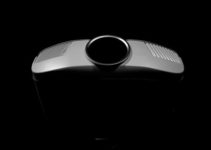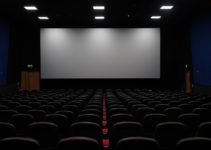- What is a white projector screen?
- What is the grey projector screen?
- What is better gray or white projector screen?
- Brightness standards for each case
- Conclusion
What is a white projector screen?
The white projection screen has two biggest advantages: it is cheap and easy to find in the market. White projector screen is often used in classrooms, corporate offices, cafes, restaurants and is compatible with most projectors.
What is the grey projector screen?
Grey screen fabric is also known as high contrast screen fabric or optical screen fabric. This is a screen fabric commonly used in professional cinemas or high-end home cinema rooms.
Grey screen fabric will be processed into fixed frame projection screens with many different sizes. Serving the needs of watching high-definition movies, professional 3D cinema.
Grey projection screens and optical projection screens are often confused by users. Unlike the optical projection screen, the grey screen has a flexible material that can be folded and stretched with a variety of frame materials such as aluminum, wood, plastic, and alloy. Fits all popular projectors.
Optical projection screens are only suitable for short and super close projector products.
Compared to the white projection screen, the grey screen does not catch the light as well, but the colors have a deeper contrast, more suitable for watching movies and entertainment than for the classroom. It means that when the table is gray, the projected image will not be brighter and will increase the color contrast.
Due to the special characteristics of use, the grey screen fabric has a higher selling price than the normal white screen fabric. The selling price depends on 2 factors: curtain fabric and size. However, the selling price of the grey screen is no longer too high and difficult to buy as before. Now on the market, many units import and process directly, so the selling price is much softer.
What is better gray or white projector screen?

It is easy to see that the contrast of the grey screen fabric is higher than that of the common white screen fabric. It helps us get the most out of the projector’s image quality. The depth of the projected image is significantly increased, making the movie experience more realistic and beautiful.
In addition to increasing contrast, the grey screen fabric also increases image sharpness and detail. Experience with the naked eye shows that the projected image is very eye-catching and feels like television.
If you pay attention you can see that most professional cinemas use white screens to ensure accurate representation of the colors presented by the projector. So why is the home cinema screen grey instead of using a white screen? The answer here is to control the lighting in the projection room.
A standard movie theater must be completely controlled for light penetration (outside light entering) and light reflection in the projection room environment, specifically, the light from the projection screen will reflect on the surrounding wall, ceiling, floor, etc, and finally bounce back onto the projection screen. And this is the main enemy that kills projector contrast. It will turn the black of the image into grey thanks.
You can shield the light from outside, but you can’t completely control the light reflected in your cinema room. Unless you paint your entire cinema room black like in a movie theater, black will absorb most of the light hitting it instead of reflecting onto the screen. But imagine what your wife will say when she returns home to find that the whole family’s living room or the couple’s cozy bedroom has turned… black.
The grey screen is to solve this dilemma. grey will help absorb the light of the environment (here I call it stray light) that is not emitted by the projector. grey color absorbs stray light and minimizes its effect on the projected image.
However, using grey also has its side effects, because while absorbing the ambient light, it also absorbs the light emitted by the projector. You will see the image of the film will darken a bit, but in return, you will still retain the deep black of the black sky because the ambient light has been absorbed.
In addition, you also have the feeling that the colors of the projection screen become darker and deeper. This is because the grey in the projection screen is mixed by the three primary colors red, green, and blue with an exact ratio to avoid causing color distortion. This grey is called neutral gray.
The Neutral grey projection screen will reflect these 3 primary colors most strongly and absorb the remaining mixed colors. This creates a deeper and darker color gamut for the image.
Brightness standards for each case
Professional cinemas are all BS (British Standard) compliant. The standard brightness for screens projected by digital projectors is 14 +/-3 fL (foot Lambert) and 35 mm film projectors. (plastic film) is 16fL. Today’s HD-3D home cinema projectors all meet this standard, some even surpassing 18fL.
Office projectors have a high brightness that exceeds BS standards because they often project in bright environments, with lights on in the room and viewers often do not constantly observe the screen like entertainment projectors, if watching movies. Continuity with high brightness may affect vision. Because of the need to achieve high brightness, office projectors have to sacrifice contrast and color accuracy, two factors that are very important in movie enjoyment.
Entertainment projectors do not need to be as bright as office projectors, but recently high-end entertainment projectors have also added models with very good intensity above 2500 Ansi Lumens that still have contrast and color true color
Conclusion
In many cases, the grey screen has many obvious advantages. But how much grey screen should I choose or should I choose grey projector screen vs white? There is no single optimal answer to this question. It depends on the lighting control conditions in your room, the reflectivity of the projector, your taste. Do you like bright-bright images or you prefer rich colors and deep black night skies… If you decide to buy a grey projection screen make sure that the grey of the screen is neutral. You can easily compare the accurately represented grayscale primary colors. Again, trust your own eyes.






